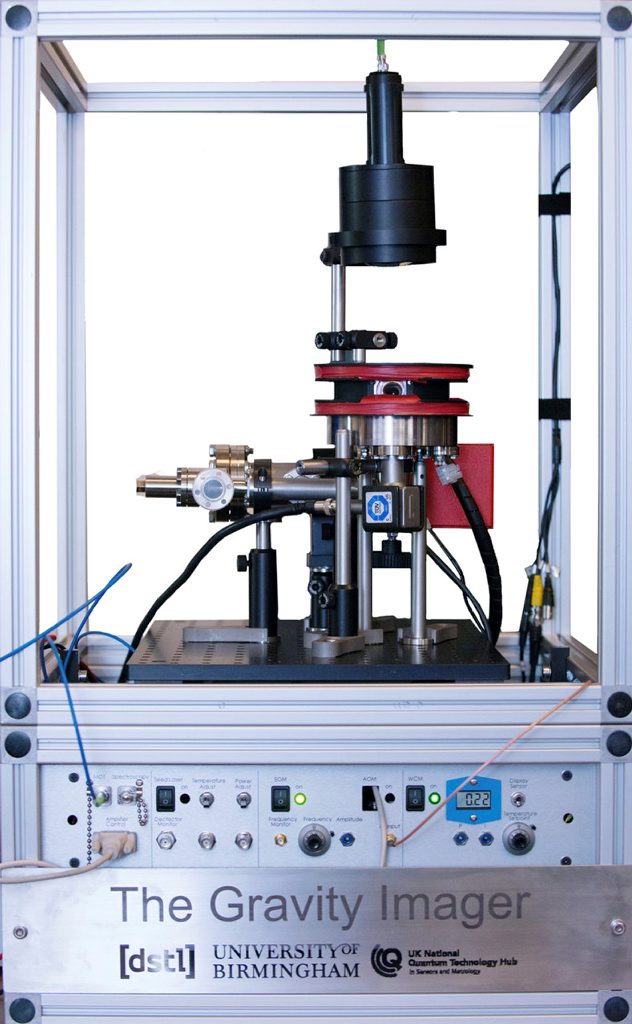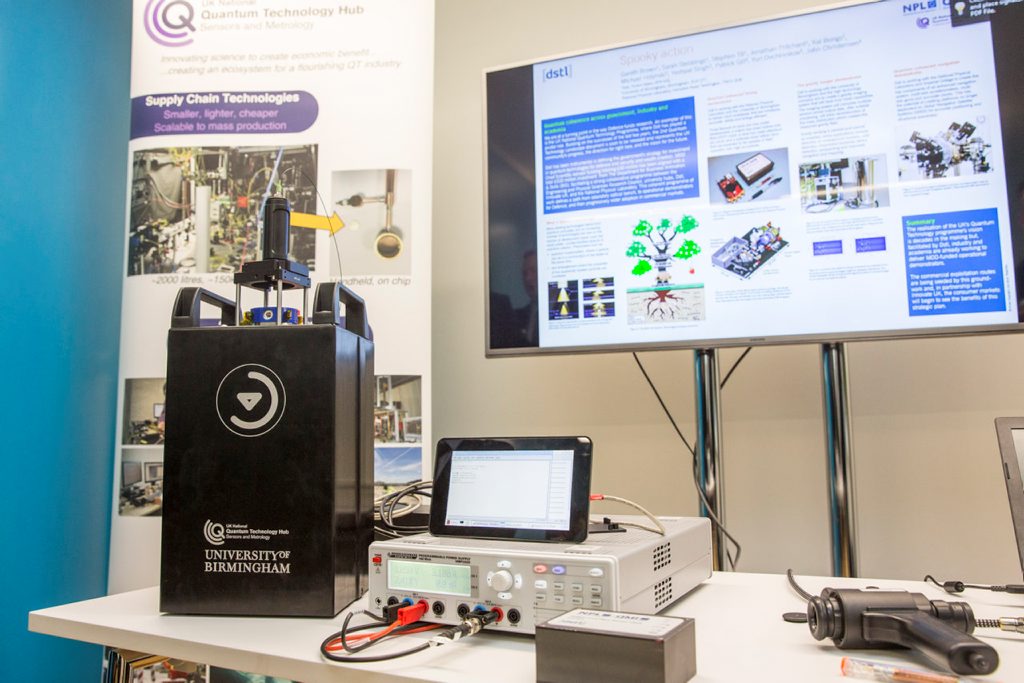Technology
‘Forget much of what you may have read’: Dstl on quantum computing
Harry Lye hears from Defence Science and Technology Laboratory senior fellow for quantum technologies Stephen Till about the defence and security applications of advances in quantum computing.

When discussing quantum computing, it is important to note the difference between what exists today and what researchers believe is on the horizon. Whereas traditional computers process information stored in bits (noughts and ones), a quantum machine does not.
Today’s computers are known as ‘serial machines’ meaning they complete task in sequence, one after the other. Quantum machines are parallel, meaning everything is processed at the same time. This, however, does not necessarily mean they are a ‘magic bullet’ to today’s computational problems, explains Stephen Till, a quantum technologies expert at the UK’s Defence Science and Technology Laboratory (Dstl) and co-author of the Dstl report ‘Quantum information processing landscape 2020: prospects for UK defence and security’, published in June.
Unlike traditional machines, quantum systems store data in qubits, which means instead of just 0 and 1, they represent every possible intermediate number at the same time. In an ideal world, a quantum computer derives its speed from being able to manipulate all of its qubits simultaneously, not in series, hence it is expected the systems will be faster than traditional computers.
Forget what you think you know
“The first thing I'd like to say is to ‘forget’ much of what you may have read over the past five to ten years; a lot of it is hype or misinformed or incorrect,” Till says. “So, a very simple observation is that quantum computers are not necessarily faster than other machines; they may not be, and they can't do everything. In particular, they can't solve unsolvable problems.”
Till explains that the expected high speed does not apply to all computations; for example, in simple arithmetic a traditional computer will not be beaten by a quantum machine. But for tasks such as factoring large integers into the products of prime numbers for encrypted communications, quantum will be a real disruptor.
“Quantum computers are predicted to be able to break RSA encryption at some future time and so they are regarded as both a threat as well as offering useful capabilities.”
“A well-known example of this type of problem at which it is believed quantum computers will excel is the factorisation of large numbers,” Till explains. “Modern RSA encryption depends on this arithmetically hard problem. It's very difficult to factor a very large number which is the product of two prime integers, but it's fairly easy to form the number in the first place as the product of the two primes.
“Because of this quantum speedup, quantum computers are predicted to be able to break RSA encryption at some future time and so they are regarded as both a threat as well as offering useful capabilities.”
This potential, Till says, means that new quantum processors, quantum sensors, and quantum communications channels will revolutionise the way we live and the way we interact with information in both a civilian and military capacity. This shift, he adds, will be “much more profound than the first information revolution which we are beginning to see mature”.

A quantum gravimeter developed by Dstl and the University of Birmingham could allow the armed forces to survey underground structures in minutes rather than weeks. Image: Crown Copyright / MOD
Quantum national strategy
Recognising the potential of Quantum computing, sensors and communication networks, in 2014 the UK established a first of its kind national programme for quantum technology.
“In the UK, we were the first country to begin a planned, coherent and ambitious programme, which exploited decades of government investment in academic research and that led to the establishment of the National Quantum Technology Programme,” Till says. “The first five years ran from 2014 to 2019 and saw an emphasis on producing prototype devices coming from university labs working closely with industry, with the intention to transition new ideas and skills to industry to manufacture novel, cutting-edge technological products.”
A core part of the UK’s quantum strategy was joining up industry and academia at an early stage, to pull together the base knowledge, but also bring technology through what Till refers to as the ‘valley of death’ and into manufacturable products. A key tool in this has been the use of Innovate UK funding, which sees government investment matched by industrial partners.
“The national programme has developed single-photon cameras which can image, at video rate, scenes which are out of the line of sight, for instance around corners.”
Till says the UK’s industrial strategy challenge fund set up in 2017 helped to give quantum research a particular boost adding: “The fund is supporting lots of quantum technology projects; for instance, the UK was one of the first to demonstrate outdoors a gravity sensor enabled by quantum technologies, a challenging achievement that few have managed. Of course one of the challenges now is to make these technologies more robust and more easily deployable.”
The UK’s approach has already led to a number of world firsts – for instance, demonstrating the world’s first chip-to-chip QKD encrypted transmissions – and has put the country in the position of being one of the leading nations in the development of quantum computing.

The quantum gravimeter is a portable gravity sensing system that could enable armed forces to survey enemy tunnels and support disaster relief. Image: Crown Copyright / MOD
Commenting on the UK’s achievements, Till says: “The national programme has developed single-photon cameras which can image, at video rate, scenes which are out of the line of sight, for instance around corners. That has clear applications to counterterrorism and general policing. We've got prototype, low-cost handheld devices for short-range communications, for instance with bank ATMs.
“Quantum computing is slightly behind the others in maturity but the industrial strategy challenge funding is now going into the development of all of the components of quantum computing systems, including software. This should, for instance, should allow the UK to build on trapped-ion qubits developed at Oxford University which have the best quality of any in the world, and could be used to build a prototype quantum computer over the next few years.”
Till said these milestones in the creation of working systems and developments on the cusp of production technologies mark an important step in the UK’s quantum programme, where significant private industry investment increasingly replaces government funded R&D.
“The end game will see the emergence of a sovereign quantum manufacturing sector in the UK.”
Industry appetite for investment is made clear by quantum challenges often being oversubscribed. “Increasingly, success is going to look like industry picking up these ideas and developing them with their own funding,” Till says.
“The end game will see the emergence of a sovereign quantum manufacturing sector in the UK and so not subject to ITAR constraints. It will mean a skilled workforce and the growing sector prosperity will ensure people and manufacturing will both stick to the UK, so we do not repeat the ‘invented in the UK, built overseas’ scenarios of the past.”
Although not too long ago, quantum technology was seen as science-fiction rather than a realistic capability, at the current pace of development, Till believes the realisation of its benefits could actually be achieved within the decade.
“We believe it's plausible for the use cases outlined in the report to realise an initial operating capability as soon as 2025 because we can exploit existing, commercially available technology and don't need to develop it from scratch.”
Game-changing capabilities
Commenting on the effects of quantum across NATO, Till said: “Quantum technology across the allies fits neatly with Dstl’s key focus areas, which include autonomy and data, and subsumes things like artificial intelligence as well as quantum technology. By working together with allies we will develop technologies that work interoperably across combined forces.
“That will require agreements in standards, architectures, and so on. To help this, Dstl has created a technology vision for quantum technology which has shaped defence thinking in the UK, to deliver clear military and security advantages, and very probably, it has shaped the way our allies are all developing their own individual programmes.”
“While the UK’s spend on quantum may be less than that of other countries, the unified approach has led it to advance at speed.”
The UK’s development model has become an example followed by a number of allies in their own research of quantum capabilities. The first national approach to quantum emerged in Australia in 2003, and was advanced in 20011, however, the UK’s approach of simultaneously building an industrial base has given it an advantage in the space. While the UK’s spend on quantum may be less than that of other countries, the unified approach has led it to advance at speed.
Putting the game-changing capabilities of quantum computing into context, Till explains: “I can remember the game-changing effects achieved through the focused, long-term development of new technology. Night-vision devices were developed during the 1940s to 1970s at Malvern’s Radar Research Establishment [later the Royal Radar, and then the Royal Signals and Radar, Establishment] but had their origins in Admiralty funded work in the 1930s at the Admiralty Laboratory at Teddington.
“The Americans said of the technology that it allowed users to ‘own the night’. I think defence and national security can derive the same sorts of battle-winning technologies from currently emerging quantum technologies; they are within our grasp but it is vital we stick at it.”